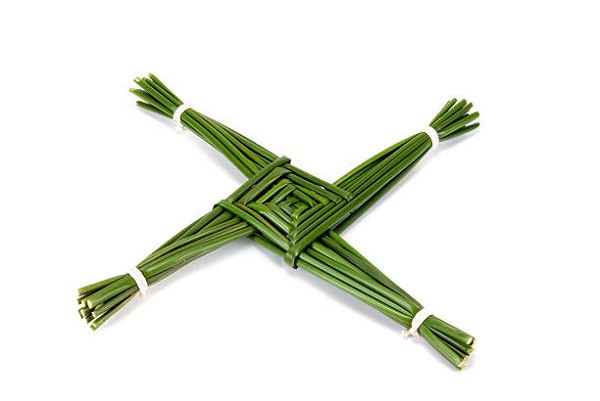
This week marks the Republic of Ireland’s newest public holiday, in honour of St Brigid. Notable as the first such holiday in Ireland to be dedicated to a woman, the new occasion also completes the Irish state's formal observance of the four major ancient gaelic festivals: Imbolc, Beltaine, Lughnasa and Samhain.
The origins of St Brigid, and the celebrations that surround her, are shrouded in legends that stretch even the broadest definitions of history, with more than mere speculation contending Brigid to be a goddess of Celtic antiquity who was, due to her enduring popularity, canonised and co-opted by the early Irish church. Other, altogether more earthly, accounts credit her as the founder of organised religious life for Irish women, rising to become the first Abbess of Kildare, and inspiring there a flowering in art and literature that would produce the highly celebrated Book of Kells, today considered a masterpiece of medieval religious art.
Whether or not Brigid was in fact goddess, or simply godly, the traditions that surround her feast day speak to a more universal sense of looking towards the end of winter and the coming of warmer weather and lengthening days. Among the most prominent traditions are the making of highly stylised reed crosses as gifts for friends and neighbours, and the practice of children, particularly girls, travelling from house to house and offering prayers and food as tokens of good luck for the coming year.
With the emphasis on children, can be most clearly seen the connections between the feast of St Brigid, and the festival of Liichtmëssdag here in Luxembourg. With both traditions having origins in the ancient festival of Imbolc, and both now being tied to the Christian celebration of Candlemas, the local tradition of children's lantern-led processions and singing of "Léiwer Härgottsblieschen" shares much in the way of faith and feeling with the observations in Ireland. As the occasion marked the first day of spring in the old calendar, the significance of light in contemporary traditions remains prominent, as do the customs that promote renewal, such as spring cleaning or fertility.
The similarities between St Brigid’s Day and Liichtmëssdag practices reflect also on broader and more universal themes of hope and celebration for the coming of spring, with the first flowers and early flashes of blossom that soften the previously bare trees. And for that, if for no other reason, whether in Luxembourg, Ireland or anywhere else, it's worth wishing "Là Fhèill Brìghde sona dhuibh uile" (a happy St Brigid’s Day to you all).










